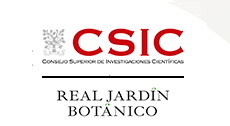Scientific Area
Of signals and synthesis: the evolutionary implications of chemical signal divergence and its relationship to biosynthetic pathways in
ID: 613 / 355
Category: Abstract
Track: Pending
Proposed Symposium Title: Of signals and synthesis: the evolutionary implications of chemical signal divergence and its relationship to biosynthetic pathways in
Authors:
Gwen M. Bode1 and Shayla Salzman1
Affiliations: Department of Entomology, University of Georgia, Athens, Georgia USA
Abstract:
The staggering diversity of mutualistic interactions found in nature, has long been a topic of fascination to science, with studies of chemically-mediated ecological interactions contributing great strides in our understanding. Investigations on the chemical ecology of ancient insect-pollinated plant lineages provides critical insight into the myriad ways such mutualistic diversity could evolve. Brood-site pollination mutualism of cycads, an early-diverging lineage of gymnosperms, is the most ancient pollination mechanism yet documented; pre-dating even the rise and dominance of flowering plants [1-3]. Cycad pollination is a classic example of a brood-site pollination mutualism, wherein pollinators develop within the reproductive tissue of their host plant, relying on them for shelter, food, and in this case, breeding site [1,2]. Cycads’ chemically mediated ‘push-pull’ mechanism ensures pollinators visit both pollen and ovulate cones through thermogenically driven increases in the concentration of cone volatiles (scent) that results in a mass exodus of pollinators from pollen cones and simultaneous attraction to conspecific ovulate cones [3,4].
Zamia, a genus of cycads found widely dispersed across the Americas and the Caribbean, are pollinated by a group of specialist brood-site mutualists, the cycad weevils (Subtribe: Allocorynina)[5,6]. The Caribbean Zamia clade, shows remarkable diversity in cone volatile composition that appears to be both species-specific and rapidly evolving under positive selection suggesting that plant chemistry is integral for maintaining species boundaries [3], yet we remain woefully unaware of how plant volatile chemistry related to pollination evolves across a lineage. In this study we conduct a deep exploration of the chemical communication across the Caribbean Zamia clade by characterizing the quantitative patterns of cone volatile chemical composition in a phylogenetic and biogeographic context. We discuss the biosynthetic origins of biologically relevant compounds and the evolutionary implications of diverging signals.




